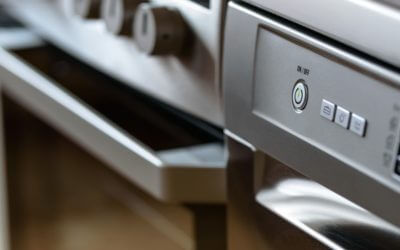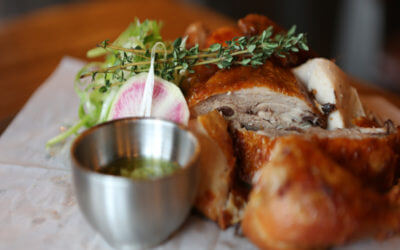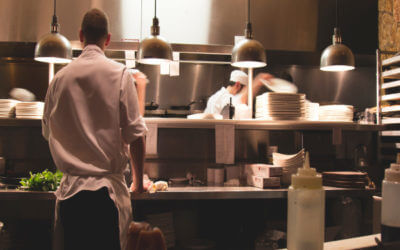How to Identify the Best Food Processor for Your Needs
March 20, 2018Highly versatile and extremely efficient, food processors are designed to take away the hard work from repetitive kitchen activities.
This type of cooking equipment can quickly become an invaluable tool in your kitchen. From chopping, to shredding, grinding, mincing, slicing, mixing and mashing, there’s much that can be done with a good food processor.
The ease with which a quality food processor handles the many prep jobs required for a great cooking experience makes it an important cooking equipment choice. Coming with a wide array of styles, functionalities, and attachments, it is pertinent that you carefully select the cooking equipment that is most suitable for your needs. Let’s help you narrow down your choices.
Power
While there is always the option of a non-electric food processor, this is a type of kitchen equipment that packs the most punch when you plug it in. Even then, each electric food processor is different in its capabilities. To handle tough tasks, look for a higher number of watts, which indicates how much power the motor uses.
Capacity
The larger the size of the bowl, the more food you’d be able to process at a time. Food processors are a type of kitchen equipment that varies in size, everywhere from 3 to 20 cups. A nine-cup bowl is a common size for a commercial kitchen, but it’s important to consider the number of people you will be cooking for when choosing a size.
Important Features
There are many important features you want to look out for when selecting the right version of this kitchen equipment for you. One is the “feeding tube.” Larger feed tubes will allow you add larger food items when working with this kitchen equipment. You also want to look out for safety features that keep usage and performance in check in order to prevent accidents.
Models with smooth touch pad controls are easier to clean than those with raised buttons. For those who plan to chop food, this kitchen equipment would best serve you when it is equipped with a “pulse” button that releases small bursts of power.
Accessories
Accessories and attachments can add to the versatility of your food processing kitchen equipment. Some food processors are fitted with multiple, different-sized bowls and multiple blade types. Likewise, other versions of this kitchen equipment might come fitted with wire beaters for baking, jug blender attachments for smoothies, and disks that grate foods to various thicknesses. Your choice of accessories should depend on what you’d actually use this kitchen equipment for.
Kitchen Space
You do not want to buy this kitchen equipment and have it take up all of the storage space in your kitchen. Those that come with a large assortment of accessories can be especially guilty of this. If you think your ideal food processor might consume a lot of space, be sure to arrange for enough storage space to fit it comfortably.
Of course, food processor brands are very likely to affect performance and pricing, but brand is far from the only consideration. Armed with a clear idea of what you need in a food processor, you’ll be prepared to choose one that perfectly fits your needs.
5 Things Every Restaurant Owner Should Do Before Buying Used Kitchen Equipment
Equipping your restaurant properly can cost a lot of money, so buying used kitchen equipment is the go-to choice for many restaurateurs. Buying used kitchen equipment for a restaurant is a bit different than buying used equipment for your home, however. You will...
Top Restaurant Technology Trends in 2018
When looking to buy restaurant supplies, you want to be on the leading edge of technology trends. This will keep your kitchen running smoothly. Let’s take a look at some of the most recent trends in restaurant supplies technology. 1. New Payment Options Who would...
5 Different Ice Shapes and Why You Should Care About Them
Ice makers are very popular in the restaurant and foodservice community because they eliminate the need to buy ice every day. And of course, adding an ice maker to your collection of foodservice equipment means you will always have ice on hand when you need it. An...
Pulping and Grinding: A Starter’s Guide to Reducing Commercial Food Waste Costs
For most restaurant owners and managers, the expenses involved in making meals are always under careful consideration. Water is needed to prepare, cook and wash food; power is necessary for food prep, cooking and cooling, and so on. However, how many of us consider...
Choosing the Right Milk Cooler: Cold Wall or Forced Air?
In a restaurant, milk is an essential to have on hand for coffee and other café-style beverages, for serving with kids’ meals, and as a key ingredient in many recipes. Keeping your milk properly chilled can be difficult without the proper restaurant equipment....
How to Choose Your Next Commercial Meat Smoker
The movies that connect with us on a personal level are the ones that linger in our memories forever. Anyone who has used a commercial meat smoker knows that they have a huge influence on the taste of a meal. You need to have just the right kitchen equipment to get a...
Are High Speed Ovens Too Good to be True?
You might have heard a few of the bold claims that foodservice equipment manufacturers have been making about high speed ovens, but they can’t be possible, right? Cooking three times as faster as regular ovens? Five times as fast? Fifteen times as fast? It may seem...
Choosing the Right Food Storage Containers for Your Restaurant
Choosing the right kitchen supplies will make a difference in your restaurant. Whether it is heavy duty kitchen equipment or food storage containers, each piece of equipment plays its own important role. Today, we are going to talk about how to choose the right food...
Tipton’s Guide to Perfect Poultry Trussing
Do you ever truss birds in your commercial kitchen? Trussing is a fantastic cooking technique because it makes poultry cook faster, look more attractive and taste better. If your commercial kitchen prepares poultry, you don’t want to miss these trussing tips. Trussing...
How to Eliminate Excess Condensation in Your Kitchen
Is your commercial kitchen getting steamy? If so, you could have more than just an uncomfortable working environment on your hands. Excess moisture in your commercial kitchen can result in the corrosion of equipment, the development of mold, and even damage to your...
The DIY Guide to Your Restaurant’s Own Garden
Stocking your restaurant supply with your own home-grown herbs and produce can truly bring your dishes to life. When it comes to food, everyone knows there’s nothing like homemade and home-grown. Having your own culinary garden, however large or small, can help you...
5 Reasons a Meat Grinder Will Set Your Burgers Apart
The more you do to prepare your foods in-house with the right kitchen equipment, the fresher and more flavorful your dishes become. There are all sorts of restaurants offering fast-food style burgers, but some diners are looking for the real deal. A fresh, juicy...
Pest Preventions to Implement in Your Commercial Kitchen
Restaurant pests: it’s something that few people want to think about. Like it or not, pest management is an essential consideration for every commercial kitchen. Offering food, shelter and water, the unprepared commercial kitchen naturally provides everything pests...
Choosing the Right Material for Your Cooking Equipment
Kitchens are very unique to their chef. Just like a car mechanic has a toolbox unique to them, so is the cooking equipment in a kitchen. And over time, the same cooking equipment become a natural extension of the chef. What tools are you using in your kitchen? It...
Kitchen Hacks for Your Home
Some people are naturally good at certain skills. We all know someone who is naturally book smart, athletic, or musically inclined. What makes you jealous of them is how easy they make tasks seem compared to you. One skill might be cooking. Your dream may not be...















